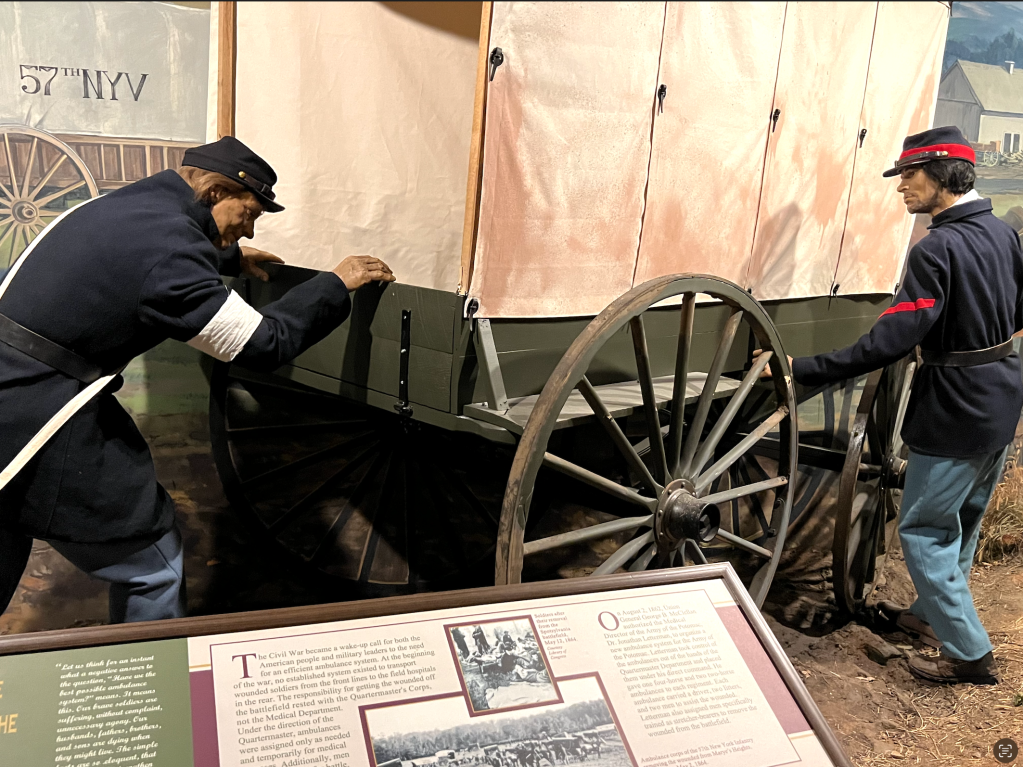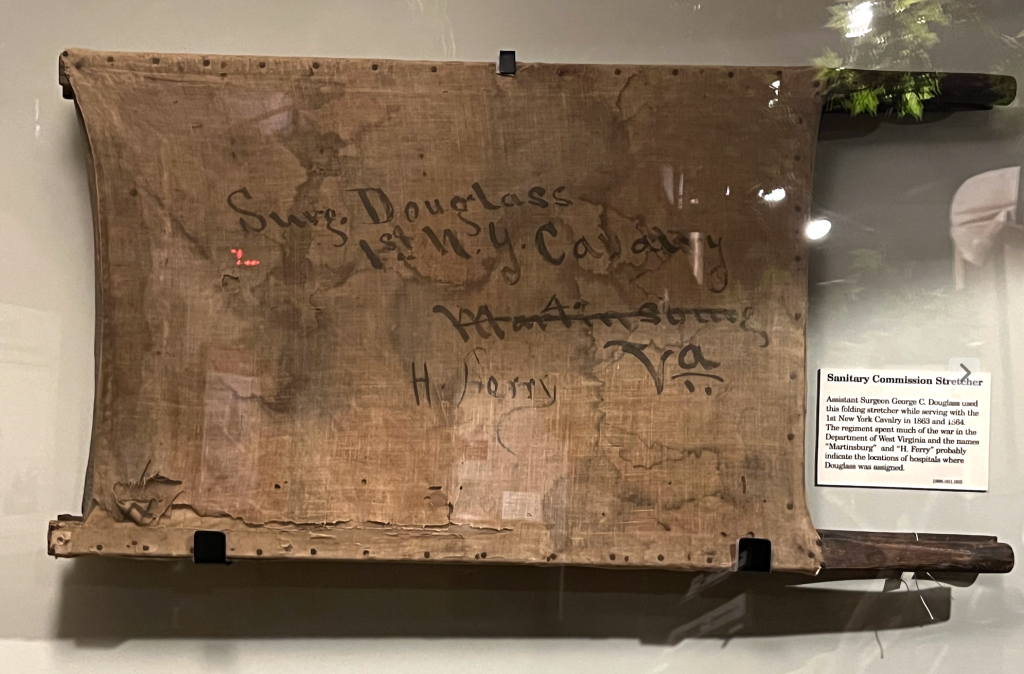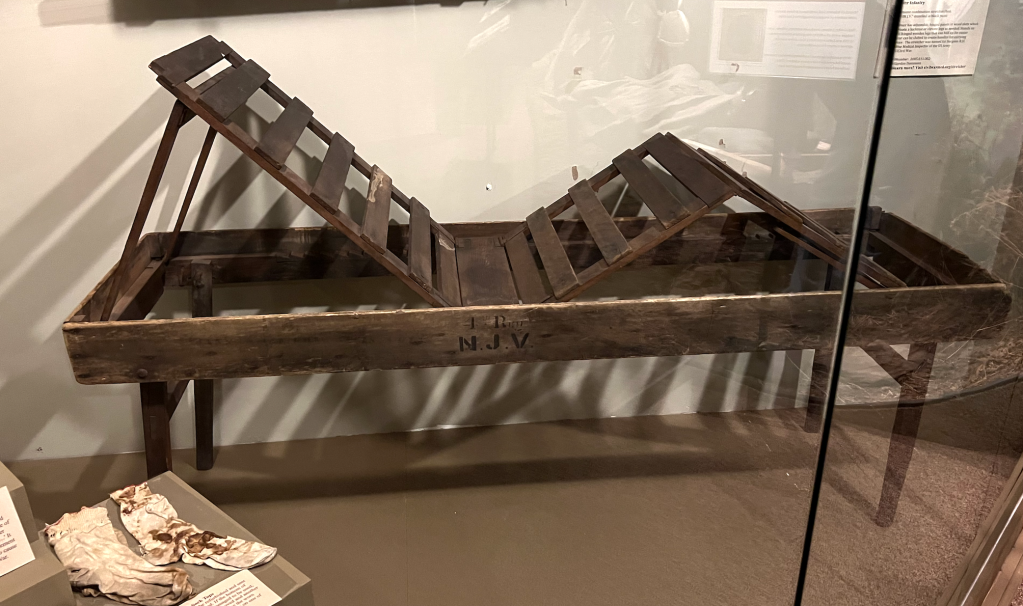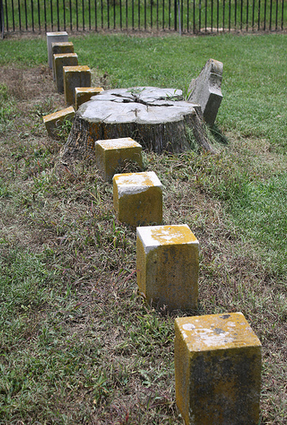These authentic artifacts are on display at the National Museum of Civil War Medicine in Frederick, Maryland.







The Battle of Franklin, November 30, 1864
Blogging since 2006. Now using ChatGPT technology to breathe new life into the story.
Source: http://tennrebgirl.com/cgi-bin/display_Items.asp?Cat=17&Sub=206
Brad Thompson was born in Osceola Illinois, enlisting as a 1st sergeant in Co B, 112th Illinois Volunteer Infantry on Aug 12, 1862. He was promoted to 2nd Lieut March 31, 1863, served as adjutant from Nov 25, 1863, and promoted to captain April 25 1865, prior to his muster out June 20th 1865.
The following letter was retrieved online on October 6, 2018 (Cowan’s Auction)
William C. Holliday (1838-1921) was born in Adams County, Ohio. The Minutes of Ohio Annual Conference of Methodist Episcopal Church described him as a “local preacher” as early as 1855. Holliday enlisted on December 21, 1863, as a chaplain and was commissioned into Field & Staff OH 90th Infantry. Holliday mustered out on June 13, 1865 at Camp Harker, TN.
Franklin Tenn Dec 18, 1864
1st Division Hospital 4 AC
Ma
Yesterday morning we moved easily in the AM. Our troops had moved rapidly after the panic stricken and fleeing rebels about four miles. It was night. They slept on the mud and under the rain. It rained all day – but this Army is so flushed with victory that they did splendid marching – though tired and worn from two days incessant fighting and almost sleepless nights. We came about fifteen miles. Rebels are still going. It is the greatest victory of the war….”
And writing to his wife from the Field Hospital ….
Six Miles North Columbia Tenn.”[Dec 19]
Mrs. Holliday,
It is about 7oclock PM. I sent you a very brief letter on the 18 at Franklin. On this same day we marched about 14 miles through the rain. At Franklin I had an opportunity of circling over the battlefield. The rebels suffered terribly. They assaulted our works and were killed by the hundred. I counted on one side the pile over three hundred and fifty graves. There were as many on the other side…”
Source: Cowan’s
On November 30, 1864, under the command of General John Bell Hood, the Confederate Army of Tennessee attacked Union troops just south of the small town of Franklin, Tennessee. Union General John Schofield, having passed by the Confederate troops in the dark of night, was attempting to unite his forces with Union forces positioned in Nashville. The process of moving troops and supplies was slowed in Franklin due to the destruction of the county bridge over the Harpeth River. Recognizing this delay could give Confederate forces an opportunity to attack, Schofield directed his troops to dig earthworks and fortify a strong defensive position along a hill on the southern edge of Franklin. This hill was known as Carter Hill and at its apex was the Carter House.
Hood was disappointed that Union forces slipped away, but he recognized that the Union troops had no quick way to cross the Harpeth River. A full frontal assault was launched against the fortified Union position. The attack was sent forward despite Hood’s troops (including the bulk of his artillery) not fully arriving on the field. The rebels charged and suffered horrific losses. Despite significant casualties, portions of the Union earthworks were taken near the Carter House. Confederate troops outnumbered Union troops and this break in the Union Lines was a strategic advantage that could have changed the outcome of the battle except for a counterattack from General Emerson Opdycke that pushed the Confederates back once more and decided the day.
In only five hours, some 1,750 Confederate soldiers and another 200 Union soldiers were killed. There were a total of nearly 9,000 casualties including those killed, wounded or captured, which earned the Battle of Franklin the distinction of the bloodiest five hours of the Civil War. The costs for the Confederate Army were felt beyond just the loss of soldiers. Six confederate generals were killed, another five were wounded, and one was captured. This loss of leadership was pivotal in the sound defeat of the Confederate Army at the Battle of Nashville some two weeks later and effectively ended the western theater of the Civil War.
The story of the Battle of Franklin is both horrible and fascinating. But it has not been without significant preservation efforts that the Carter House and the Franklin Battlefield have been saved from the pressures of adjacent development. More recently, significant sites have even been purchased and structures have been removed to restore the battlefield. The charge of this master plan is to continue these efforts, to direct future reclamation of the Battlefield from development pressures, and to create a plan to tell the stories of the battle that occurred at Carter Hill and of the people that lived in the simple home that became a crucial Civil War battlefield.
Text credit: Carter House Master Plan (n.d.): p. 4
Brigadier-General Francis M. Cockrell led a brigade under Samuel G. French at Franklin. It was all-Missouri brigade: 1st-4th (Garland), 2nd-6th (Flournoy, Carter), 3rd-5th (Canniff), and 1st-3rd MO Cav dismounted (Gates). Of these, Garland and Canniff were killed, Carter and Gates were wounded. Cockrell himself was lucky, he had two horses shot out from under him and was wounded in the right arm, left leg, and right ankle. Garland was shot while carrying the 1st Missouri flag. Canniff was within ten yards of the line when he was shot.
Cockrell’s men assaulted the Federal line just east of the cotton gin. Jacobson says it is likely that Cockrell’s Missourian’s were the first Confederate’s to hit the Federal line. They would have been warmly greeted by the 65th Indiana Infantry (Casement).
“The Federals obliterated the Missouri ranks, and a Confederate captain said the air “was all red and blue flames, with shells and bullets screeching everywhere…” The barrage was so intense that some of the Missourians actually turned their shoulders into the firestorm and bent down at the knees in the hope of getting through.” [Citation: Jacobson, Eric A.. For Cause and Country: A Study of the Affair at Spring Hill & the Battle of Franklin (Kindle Locations 5978-5980)]

Years after the war Cockrell said the following about Franklin, “When I got these wounds I was at the front line right in the midst of the fight. I tried my right leg, and when I found out i couldn’t walk on it, I hobbled off the field. It was not until the surgeon was working on my right ankle that I found I had been wounded in my left leg.” [Citation: The Civil War Times, December 2017: p. 55]
After the war, Cockrell said this of his brigade at Franklin. “I lost two-thirds [at Franklin] having had every fourth man killed dead, or mortally wounded, and since died. This was by far the fiercest and bloodiest and hottest battle I have ever been in. My Brigade acted more handsomely, defiantly and recklessly than on any field of the war; and you know what it required to eclipse all former conduct on so many bloody fields.”

“They march quietly, and boldly, and steadily through the broken and fleeing ranks of at least twice their own number, and no man wavered – all to the stop, with colors six paces in front, just like a drill, and never brought their guns from a ‘right shoulder shift’ until within thirty or forty yards of the enemy’s works. and then fired by order, and hurled themselves against the works. It was grand and terrible in the extreme.Almost all were killed and wounded very near the works, or in the ditches of the works. I have no language to paint the scene.” [Citation: The Civil War Times, December 2017: p. 55-56.]
Historian Gottshalk (In Deadly Earnest) says that Cockrell had 696 men who went into the fight at Franklin and they suffered 419 total casualties.

Here are the known/identified Missourian’s from Cockrell’s brigade buried at McGavock Confederate Cemetery:
Garland: 1st MO – 8 and 4th MO – 6 for a total of 14 men
Flournoy, Carter: 2nd MO -13 and 6th MO – 7 for a total of 20 men
Canniff: 3rd MO – 15 and 5th MO 11 for a total of 26 men
Gates: 1st MO Cav dis – 10 and 3rd MO Cav dis – 11 for a total of 21 men
Of these 114 total Confederate known-dead at McGavock, Cockrell’s Missourian’s accounted for 81 of the 114.
[Citation: The McGavock Confederate Cemetery (2017): p. 187.]

For further reading:
Tags: Battle of Franklin | Francis M. Cockrell | Missouri | Indiana | 65th Indiana Infantry | John Casement | Cotton gin | 1st Missouri Infantry | CSA | McGavock Confederate Cemetery | Ed Bearss